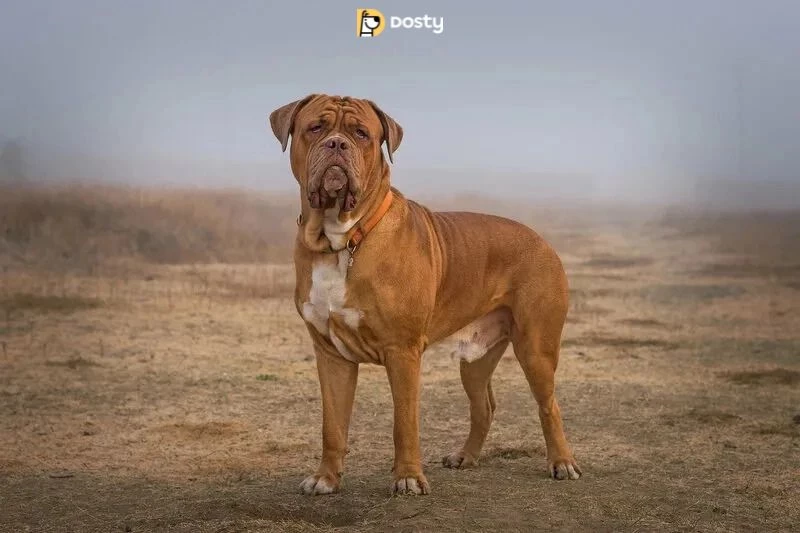On this page
About the Fawn Mastiff
The Fawn Mastiff is a color variant of the English Mastiff, an ancient breed that descended from the Romans and Greeks. An impressively confident guardian, the mastiff was custom-bred from a cross of Molossian Hounds, Alaunt dogs, and early forms of bulldog types, producing a creature bred for brawn and blood. These dogs were used as war dogs, livestock guardians and estate protectors. They were bred over the centuries to have a gentler temperament, which made them reliable companions as well as fierce watchdogs.
Mastiffs, Fawn Mastiffs included, need to be managed in terms of their weight to deter joint care and obesity related diseases,’ says Dr Kate Bruce "An appropriate dietary intake, especially one with a high protein content balanced with joint-supportive nutrients, is essential to their health.”
By the 15th century, English breeders had shaped the Mastiff to become a family protector. Their enormous size, deep loyalty, and placid disposition made them perfect for guarding large estates. Today the Fawn Mastiff is still one of the most popular varieties of Mastiff, known for its light tan coat and characteristic black mask.
💡 Quick Facts About Fawn Mastiffs
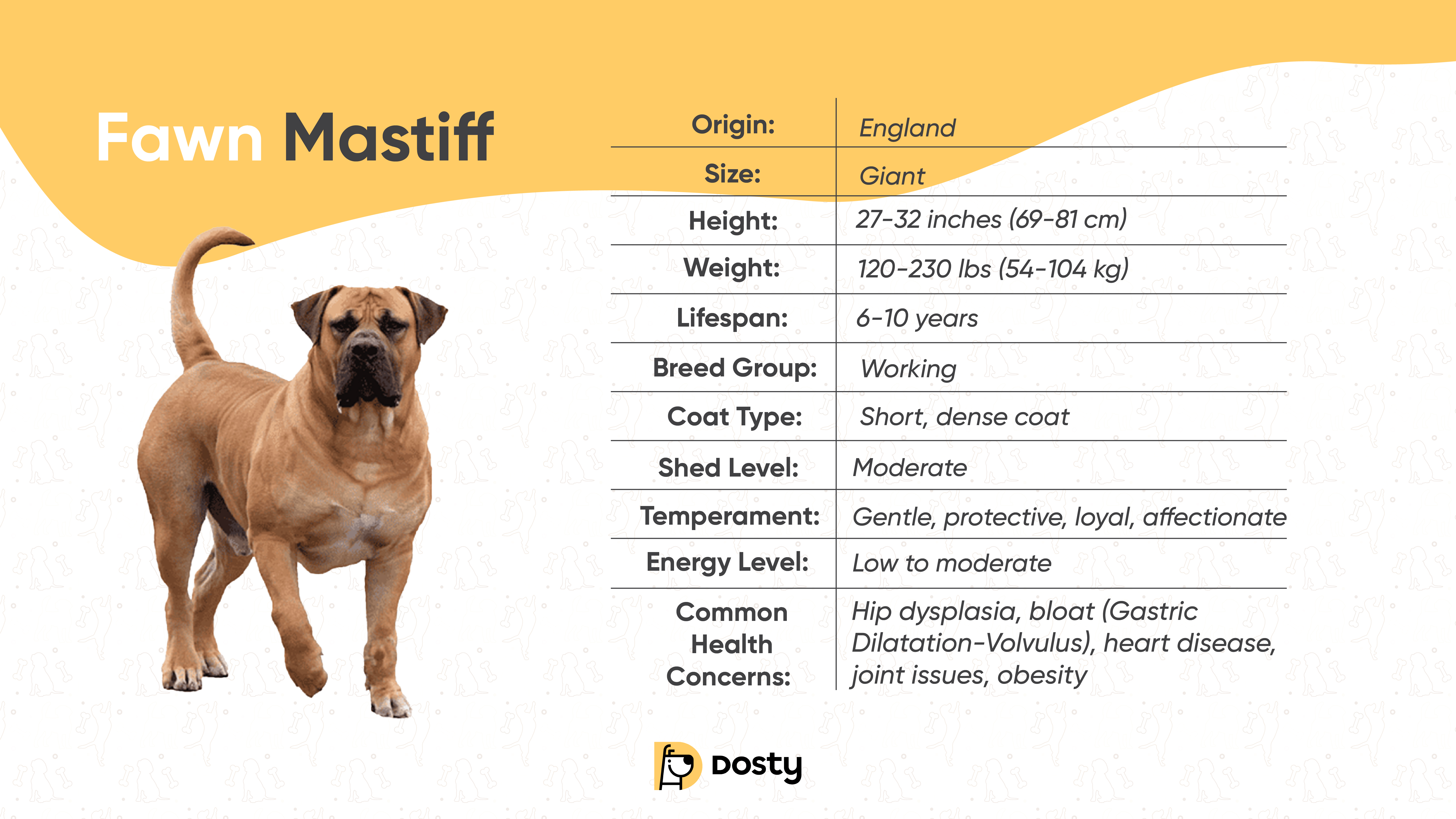
👉 Get the right feeding, training, and health advice with Dosty App!
Is the Fawn Mastiff a Unique Breed?
No, a Fawn Mastiff is not a separate breed, but a color variation of the English Mastiff. They share the same genetics and temperament as other Mastiffs but a fawn coat gives them a different look.
Fawn Mastiff Characteristics: What Makes The Fawn Mastiff Unique?
- Light Fawn Coat – Light yellow through to deep tan.
- Black Mask – More intense colour around the muzzle & eyes.
- Gentle Giant Personality – They are very loving and get along with everyone.
Explore blogs, breed insights, and expert advice on Dosty.co!
_(4)_1742213702.webp)
Do Fawn Mastiffs Have Specific Dietary Needs?
Yes, Fawn Mastiffs, owing to their gigantic size, need a high-protein, high-caloric, nutrient-dense food to promote muscle strength as well as ensure the health of their joints.
Best Diet for a Fawn Mastiff:
✔ Protein (25–30%) – Necessary to maintain muscle (chicken, beef, fish).
✔ Healthy Fats (10-15%) – Promotes coat health (salmon oil, flaxseed).
✔ Glucosamine & Chondroitin – Helps ward off joint issues and arthritis.
✔ Calcium & Phosphorus – For strong bones and teeth.
Foods to Avoid:
❌ Too many carbs – Can contribute to obesity and bloat.
❌ Synthetic fillers – Can cause digestive discomfort.
❌ Grapes, chocolate, onions, and garlic — all toxic to dogs.
Dr. Ross Bernstein says, “Large breeds such as Mastiffs are prone to getting bloat; therefore feed them two to three smaller meals throughout the day instead of one large meal.”
Have a lot of questions about the diet of your Mastiff❓
With the Dosty App, you can:
✅ Monitor meal sizes to avoid overfeeding & bloat hazards
✅ Receive vet-approved nutrition recommendations for large breeds
✅ Create meal reminders at the best times for feeding
📲 Start tracking with the Dosty App today!
_1742213372.webp)
How Big Do Fawn Mastiffs Get?
A Fawn Mastiff is a giant dog with a strong and muscular body. Males typically weigh 72–100 kg (159–220 lb) and measure 76–91 cm (30–36 in) tall at the shoulder, while females weigh 54–77 kg (119–170 lb) and measure 70–81 cm (28–32 in). Their large size necessitates strict weight management to avoid joint problems and other health issues.
Fawn Mastiff Growth Chart
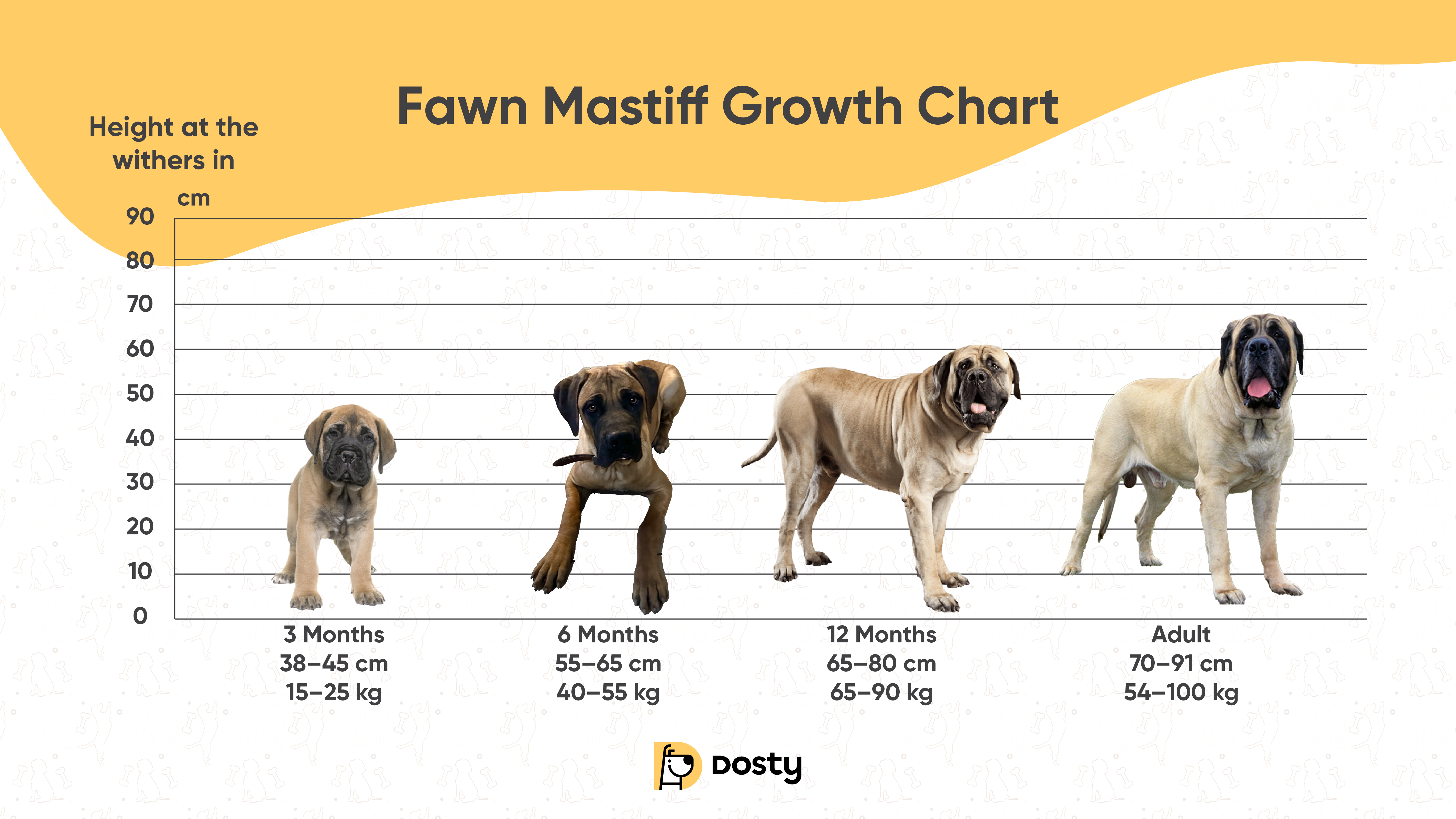
🔍 Did You Know? Mastiffs were used as war dogs by Julius Caesar, leading battles alongside Roman soldiers.
Are Fawn Mastiffs Easy to Groom?
Yes, Fawn Mastiffs are considered low-maintenance dogs in regards to grooming, but their large size and skin folds do require regular care. Their short, smooth coat does not tangle easily, which makes them easy to brush and bathe. But because they have very loose skin and facial wrinkles, they need to be cleaned often to prevent bacterial infections.
Fawn Mastiff Grooming Routine:
- Brushing (1–2 times a week): Use a soft-bristle brush or rubber grooming mitt to help remove loose hair and spread natural oils.
- Bathing (Every 6–8 weeks): Shampoo with a mild, hypoallergenic dog product to avoid causing any skin irritation. Mastiffs have sensitive skin and should keep bath to a minimum.
- Wrinkle Cleaning (Everyday or Alternate Day): Their facial wrinkles trap moisture and dirt, resulting in skin infections. Keep them clean by using a damp cloth or dog-safe wipes to wipe between their wrinkles.
- Ear Cleaning (Weekly): The deep ears of Mastiffs make them prone to wax and debris buildup. Cleaning ears regularly prevents ear infections.
- Nail Trimming (Every 3–4 weeks): Due to their substantial weight, added pressure is exerted on their paws, so adequate nail care is vital to inhibit discomfort and motor function impairment.
Having trouble keeping up with your Mastiff grooming routine❓
With the Dosty App it becomes so easy.
✅ Step-by-step grooming guides specific for Mastiff
✅ Brushing, bathing, and nail trimming reminders so you never forget
✅ Expert advice on how to maintain their skin, ears and paws
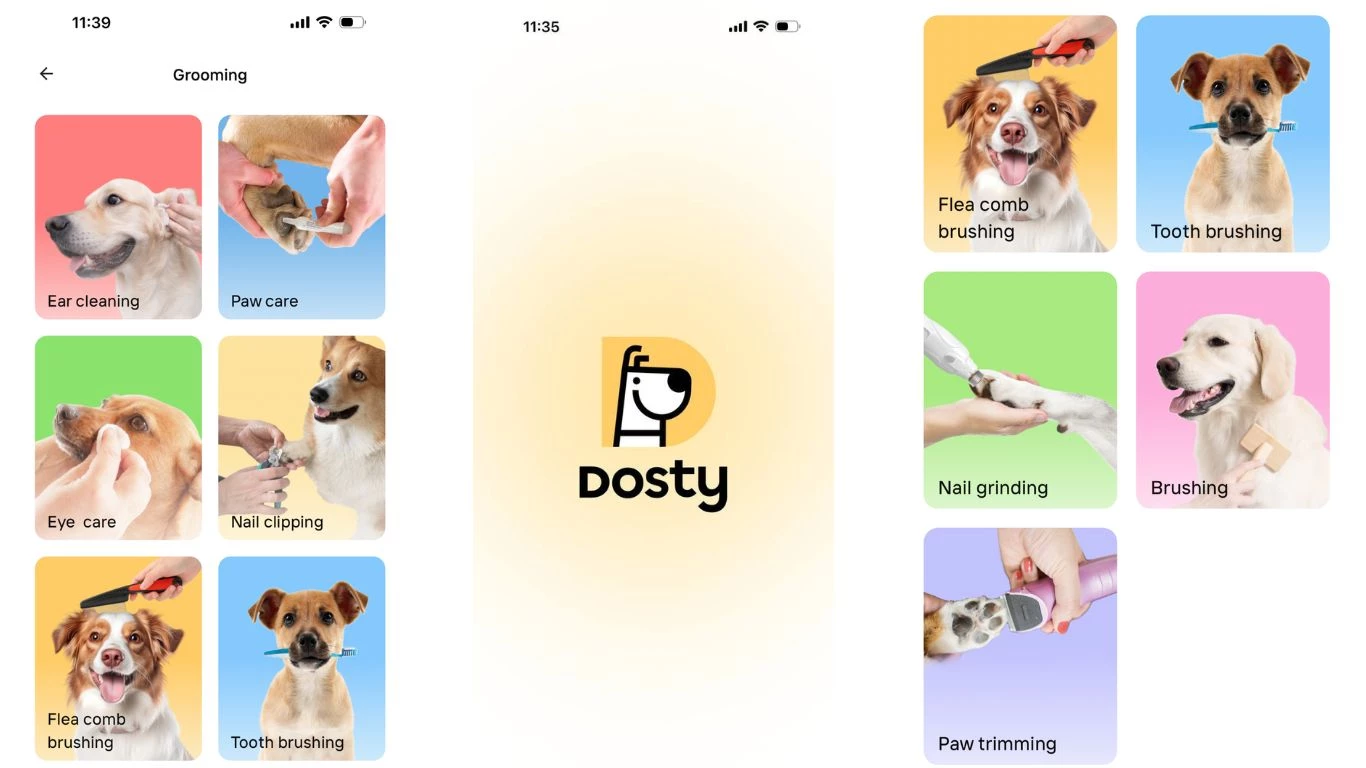
Do Fawn Mastiffs Enjoy Playtime?
Yes, but in moderation! Fawn Mastiffs are more placid than energetic so prefer short spurts of exercise.
Top Activities that a Fawn Mastiff Enjoys:
- Gentle Walks (30–45 minutes at a time) – Helps them stay in shape without putting pressure on joints.
- Puzzle Toys & Mental Stimulation – Keeps boredom away.
- Light Tug-of-War – It appeals to their natural strength.
Avoid:
🚫 Long-distance running – Mastiffs are not built for endurance purposes.
🚫 High-impact jumping – Risk injury to their joints.
Wondering what are the best activities and training for your Mastiff❓
Don’t worry, the Dosty App has got you!
✅ Outside of Training: Discover name training, reward methods, and tactile interaction for creating a solid base.
✅ Must know: sit, stay, recall, place, and no (to be a good boy)!
✅ Positive Reinforcement: Build trust and communication using marker words and hand signals.
✅ Monitor levels of activity and tailor exercise regimens to ensure your Mastiff stays fit without overexerting himself.
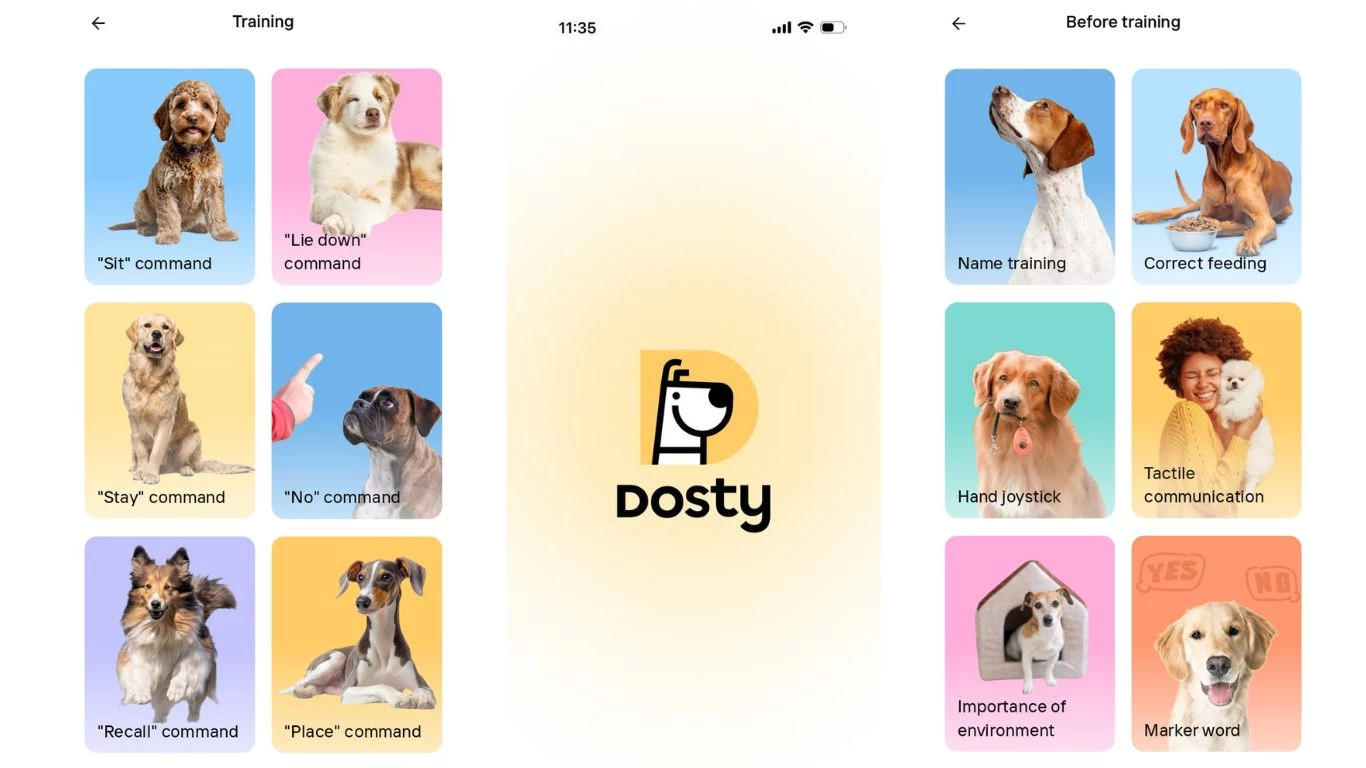
Are Fawn Mastiffs Good for Families?
Yes, Fawn Mastiffs are loyal, loving and protective pets making them wonderful companions for families. They are also patient with children and form strong attachments to their owners. They are naturally cautious of strangers, but not aggressive unless cornered.
They are low-energy indoors and are a great option for families seeking a mellow, low-maintenance pet. But their big size requires early training to avoid accidental bumps about little ones.
📢 Transform overwhelmed into in control❗
Every dog owner has been there; dealing with jumping, pulling, high-energy puppy play, clumsiness, or a similar overwhelming behavior. From gentle manners to basic commands, grooming and everything in between, the Dosty App keeps you up to date.
✅ Large breed step by step training
✅ Obedience sit, stay, recall & more
✅ Grooming guides so your pup looks & feels his best
_1742214372.webp)
What Health Issues Are Common in Fawn Mastiffs?
Fawn Mastiffs are predisposed to certain health issues due to their bubbly size and genetic history.
Common Health Issues in Fawn Mastiffs
“Mastiffs are susceptible to bloat and hip dysplasia, so owners should monitor food intake and provide joint support supplements,” says Dr. Tristan Lee
If you are wondering whether your Mastiff may be exhibiting signs of a health problem❓
Stay on top of things and take proactive action with the Dosty App:
✅ Symptom Checker – Find out of whether your medical concerns are legitimate
✅ Chat assistant – Get instant, expert-backed advice on symptoms and care
✅ Vet-approved health insights – Recommendations specific to large breeds
✅ Reminders for meals, standing supplements, and check-ups to avoid common Mastiff problems
Download the Dosty App today! 👈
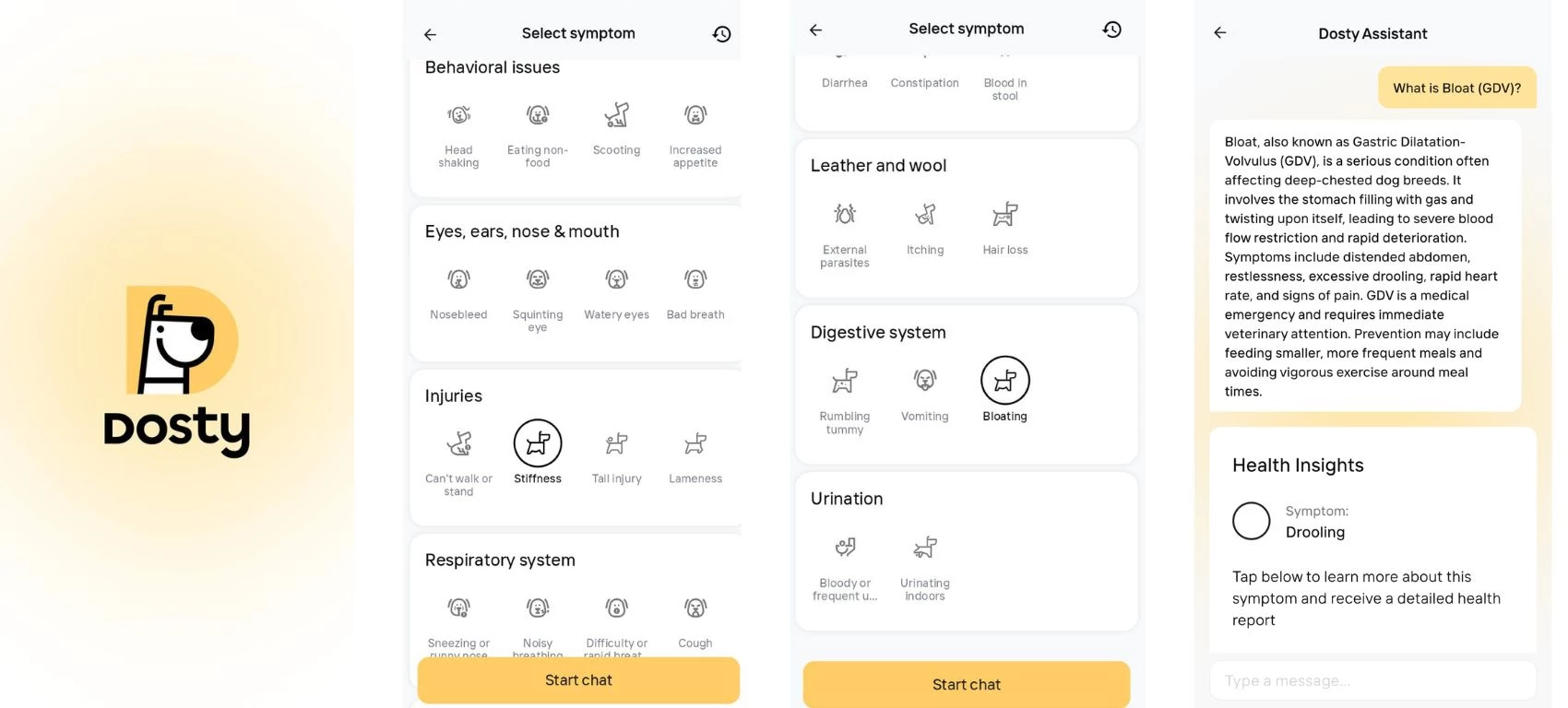
FAQs About Fawn Mastiffs
1. Are Fawn Mastiffs aggressive?
No, they are gentle but protective when needed.
2. Do Fawn Mastiffs bark a lot?
They are quiet but will bark if they sense a threat.
3. How long do Fawn Mastiffs live?
On average, 6–10 years.
4. Do Fawn Mastiffs get along with other pets?
Yes, with proper socialization.
Conclusion: Why the Fawn Mastiff is a Great Choice
The Fawn Mastiff is a protective breed that comes in as a loyal companion that loves their family, and is great for those families who are looking for a gentle giant. Fortunately, they share their trainability, exercise regimen, and joint care concerns with their human owners. When well-kept, they return the favor with unwavering loyalty and love.
👉 A Fawn Mastiff is more than just a pet, it’s a devoted guardian and loving companion. Give them the care they need to thrive!

